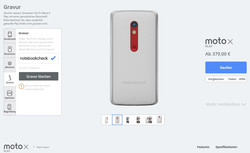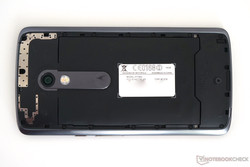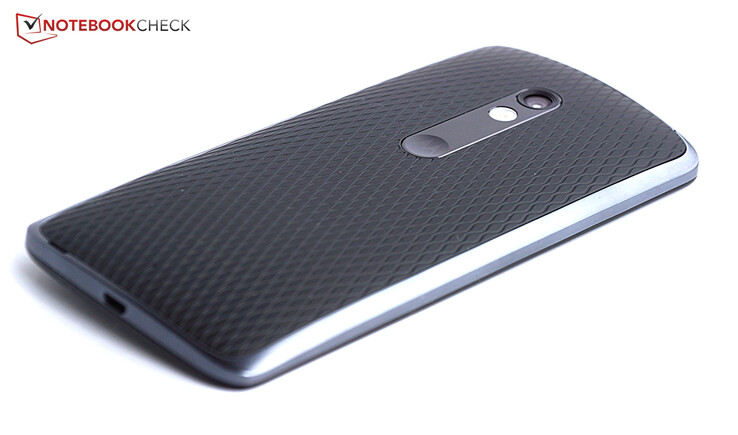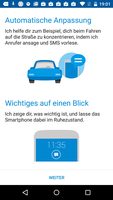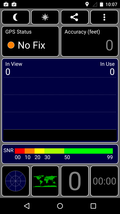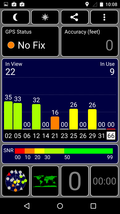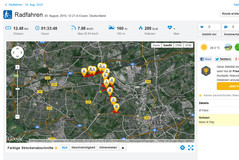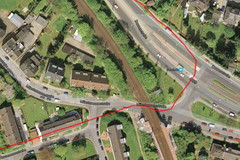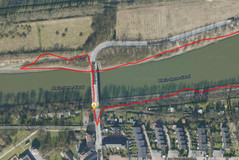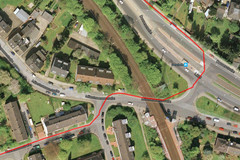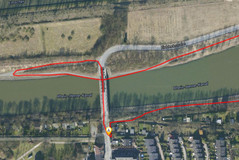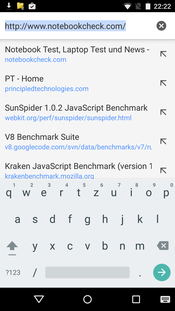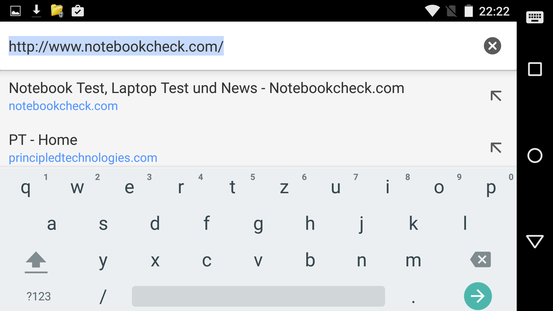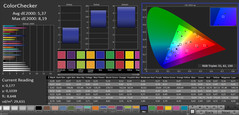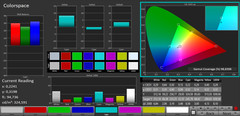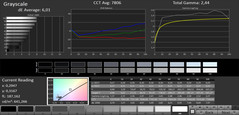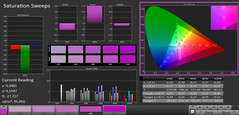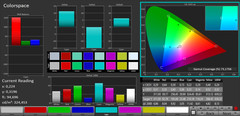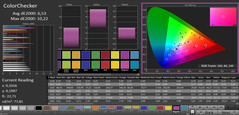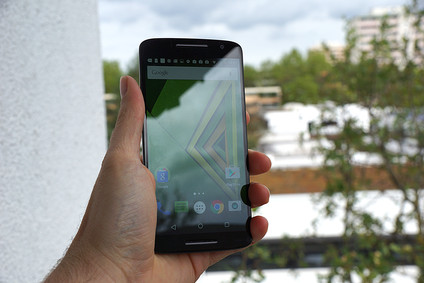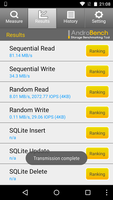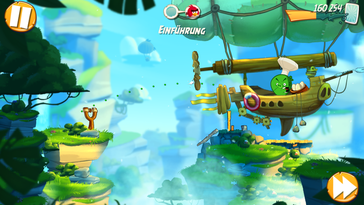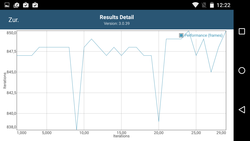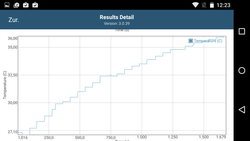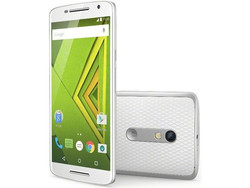Motorola Moto X Play Smartphone Review
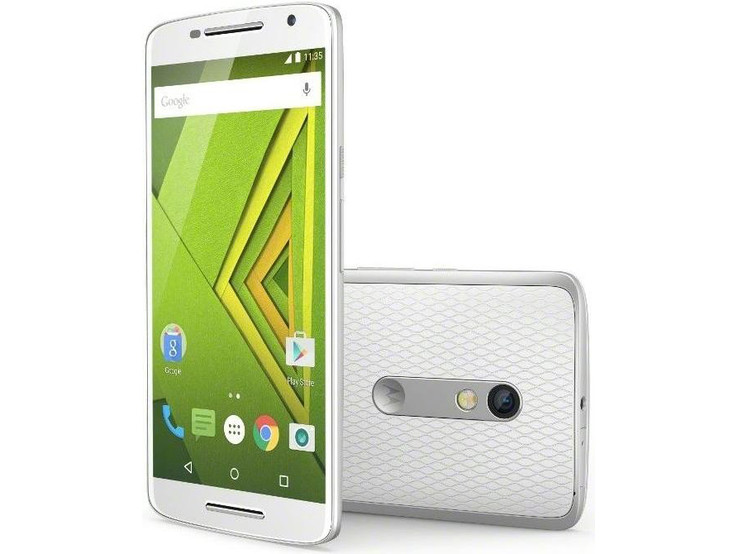
For the original German review, see here.
The quality in the mid-range smartphone has clearly increased in the past months: Full HD screens are now standard, the performance of some SoCs is high-end, the battery life is continually increasing, and the manufacturers are vying with each other in terms of camera quality. Consequently, the buyer finds many features for under 400 Euros (~$454) that were previously exclusively reserved for considerably more expensive smartphones.
OnePlus' One paved the way in this trend. Its clever marketing that only allowed purchasing upon invitation, and above all its outstanding price-performance ratio prompted a downright hype. Of course, established manufacturers now respond, and offer smartphones within this price range with premium features. Today, we are having a closer look at Motorola's Moto X Play, which represents Motorola's new mid-range.
Primarily, the smartphone is aiming to impress with its battery that is to last up to two days of mixed usage. Motorola has also installed a 21-megapixel camera, which puts it on par with modern top-range smartphones - at least regarding the megapixel count.
Whether or not Motorola's Moto X Play will successfully establish itself in the new mid-range depends on the features of equally expensive devices. The OnePlus 2 is the successor of the aforementioned OnePlus One that is still a smartphone with a superb price-performance ratio. The Honor 6 Plus, the Honor 7, the Asus ZenFone 2 and the HTC Desire 820 are in the same league as the Moto X Play. Google's Nexus 6 and Apple's iPhone 6 Plus are considerably higher priced, but perhaps the Moto X Play can take it up with these leaders. We will find out more in the following detailed report.
Case
The casing of the Moto X Play is made entirely of plastic. Unlike OnePlus' 2 or Honor's 6 Plus, there is no sign of aluminum or fiberglass. However, it is better to accept a high-quality plastic casing with pleasant surfaces than a superimposed aluminum bezel at any cost, and thus we very much like the casing of the Moto X Play. The curved back gives the device a nice feel, and the lightly rubber-coated texture provides a good grip. Gorilla Glass covers the entire front, and wide speaker openings are situated at the top and bottom.
A certain degree of resemblance to Google's Nexus 6, which also comes from Motorola, is undeniable. The smartphones are very similar, especially on the front. As in that review, the design cannot quite compete with that of an iPhone 6 Plus, and overall, we also liked the more basic design of OnePlus' 2 better - but that is of course a matter of taste.
The material impression is also good, and the Moto Maker will certainly please individualists: The device can be personalized via many colors on Motorola's website, and the back is also available in either black or white. The colors actually highlight the speaker openings, camera module and the back. It is also possible to engrave something personal on the back. The options are not unlimited, but there are fourteen colors available for the back and seven for accents, making it possible to try different combinations.
Motorola has coated the casing with a nano finish, which makes it splash-water resistant. However, the smartphone should not be immersed in water because the ports are not protected against water, and the casing is not completely waterproof.
The back can be removed, but the relatively large battery cannot be replaced. To-date, there are no Teardown videos or repair guides so that we cannot say much about repair options. The related Nexus 6 is quite easy to repair thanks to its many screws and little use of glue, and the latest Moto X also seems comparatively easy for savvy users to repair, and thus chances are also good for the Moto X Play.
The curved back and large battery, measuring 10.9 millimeters (~0.43 in) at the thickest point, do not make it exactly slim. However, Asus' ZenFone 2 is just as bulky. The iPhone 6 Plus and Honor 6 Plus are considerably slimmer. On the other hand, Motorola's Moto X Play does not need to be ashamed of its weight: With a weight of 169 grams (~6 oz), it is lighter than many other phablets, and only HTC's Desire 820 significantly undercuts this weight.
Connectivity
The Moto X Play is normally shipped with only 16 GB of storage; the 32 GB version is exclusively available on Motorola's website. The storage can be expanded by up to 128 GB, which is a clear advantage over the OnePlus 2 that is also sold with 64 GB, but does not feature a micro SD slot even in models with less storage.
However, OnePlus 2 is equipped with an innovative USB Type C port that only supports USB 2.0 speeds. The buyer has to be content with a not as future-proof, but still currently more commonly installed Type B port in the Moto X Play. Then again, this has the advantage that existing charging cables can be used. USB on the go, i.e. connecting external storage devices to the smartphone, is not supported.
Miracast for transmitting videos to external monitors, for example, smart TVs, is supported. However, a Sony smart TV was not identified in our test, although the Windows computer could still transmit video signals.
Another advantage over OnePlus 2: The NFC chip that allows the Moto X Play to communicate with nearby devices.
Software
Motorola, a former Google subsidiary, uses a largely unchanged Android version that is only extended with some apps. The latest Android 5.1.1 version is used. Updating to future versions should be easily possible thanks to the small modifications and Motorola even guarantees that.
Additional apps include Motorola Moto that expands the smartphone by a personal assistant. On the one hand, it is a voice control that can even wake up the phone, and on the other, extended gesture control and notifications, as well as the time in standby can be activated and adapted here. Profiles that are linked to specific places or actions are also possible.
Data can be easily adopted from other smartphones via Migrate, and an expansive support app is available for newbies.
The settings have only been modified subtly, but it is at least possible to personalize the screen with some modes.
Communication & GPS
The Moto X Play supports four GSM, five UMTS and ten LTE bands. This results in a very impressive diversity of network options, even in foreign countries. We like the reception: We always had a decent LTE or at least HSPA+ reception even indoors in an urban area in the German O2 / EPlus network. The maximum speed of our plan is limited to 21.6 MB per second in the LTE network, and we achieved approximately 8 MB per second in a random test in a building.
Wi-Fi standard 802.11 a/b/g/n is possible, and thus the 5 GHz range can also be used. The full signal was displayed in the router's vicinity. The signal strength fluctuated between 50 and 70% at a distance of ten meters (~33 ft) and through three walls. However, websites still opened very fast.
We could not measure a GPS signal on the smartphone indoors. However, the Moto X Play also had problems finding a strong enough signal for localization on a cloudy day outdoors.
The Moto X Play had to restore its honor on a mountain bike trip, and competes against the Garmin Edge 500 navigation system. In fact, the GPS fares quite well in everyday use. The measured routes exhibit a difference of only 30 meters (~98 ft), which is negligible over a total route of more than 12 kilometers (~7.5 mi). The navigation system proved more accurate after all: For example, according to the Moto X Play we "flew" over a rooftop in an intersection area, unlike the Edge 500 that correctly placed us on the street. Nevertheless, the Moto X Play is quite suitable for navigating.
Telephone & Call Quality
Anyone who has ever used the phone app of Android Lollipop will find a familiar interface in the Moto X Play. Motorola has not changed anything about the default app, which primarily focuses on frequently called contacts. However, the keypad is always accessible via the round button in the lower center. A search box is in the upper area, and the contact list can be opened quickly by swiping left twice.
The call quality leaves us with a mixed impression. On the one hand, the integrated front-facing speaker is used as the earpiece, which allows a very high maximum volume. On the other hand, the speaker soon starts to hum at high volumes. The best results were achieved at a volume of approximately 70%, but we found the rendered voice quality not quite as clear as in higher quality smartphones. The microphone also hums when speaking loudly, which was confirmed by our contact. However, the background noises are filtered quite well.
Cameras & Multimedia
Motorola uses 21 megapixels for its rear-facing camera. Just considering the figures, the camera should be superior to all comparison devices. However, naturally we look closer to find out whether the color reproduction and sharpness of the pictures is impressive. In fact, we were quite pleased with the results of the rear-facing camera: Even small details can still be recognized clearly and are sharp in blowups, such as the individual bolts of the bridge in the first screenshot. Although there are overexposure effects and color fringing, they are only seen on closer inspection. Leaves on trees in the distance are not depicted as detailed and look rather like a homogeneous area, which is evident on the opposite riverside in the second photo. However, we very much like the pictures in view of the compact lens; the color reproduction is especially compelling.
Videos can be recorded in 1080p and at 30 frames per second. Oddly enough, the colors no longer look quite as natural, but the pictures are sharp. The auto focus adjusts quite quickly, and movements look smooth.
The front-facing camera has a resolution of 5 megapixels, and we were pleased with the colors. Minor color fringing and blurriness can be observed at the edges when zooming in more closely. However, this should be quite acceptable in selfies for social networks.
Accessories
In addition to the Moto X Play, a USB cable and charger with two USB ports for recharging more than one device are included in the box. The charging device has an output of 1.15 ampere, which is equivalent to a charge time of approximately 2 hours. A "TurboPower" charger with a higher output of 1.67 ampere that reduces charging time significantly is available on Motorola's website. However, it is not exactly cheap at almost 30 Euros (~$34).
A Wallet Shell, i.e. a protective cover with a microfiber card slot is also available for 35 Euros (~$40). The other accessories are not specifically tailored for the Moto X Play, but the micro power pack with key chain might be useful when the smartphone needs more power on the move. It costs almost 50 Euros (~$57) on Motorola's website.
Warranty
Motorola includes a 24-month warranty on its smartphone.
Input Devices & Handling
The virtual keyboard also will look familiar to Android veterans. Motorola uses Google's standard app, which is a nice thing. The keyboard is clearly arranged, handling is accurate, and several looks allow adapting it to personal preferences. There are also many settings, and voice dictation is possible as well as inputting by swiping over the keyboard. Users who need additional or other features can find several alternative keyboards in Google's Play Store.
The touchscreen is very accurate, up into the corners. The keys on the casing's right look slightly unstable. We would have hoped for a higher quality here. However, they have a clear pressure point and are convenient to use.
Motorola Moto personal assistant expands the controls by gestures, or more precisely by one gesture: Twisting the wrist twice opens the camera. Will this be of great help in everyday use? An assistant like Cortana or Siri is also installed. However, since Google Now is also preloaded on Android smartphones, this feature does not add much novelty in terms of use. The only advantage is that Motorola's solution can be activated in standby.
Display
The Moto X Play has a 5.5-inch screen with 1920x1080 pixels, i.e. Full HD resolution. Most comparison devices also offer this resolution. Two exceptions are HTC's Desire 820 with a considerably lower resolution of 1280x720 pixels, while Google's Nexus 6 has a higher resolution of 2560x1440 pixels. Overall, the Full HD resolution is enough for a sharp image; individual pixels are not visible even when looking closely.
The Moto X Play outperforms all the rivals in one aspect: screen brightness. The image shines with up to 641 cd/m². Not even Apple's iPhone 6 Plus can compete with this. Its illumination of 93% is also quite homogeneous, and differences in brightness in large colored surfaces are not visible.
| |||||||||||||||||||||||||
Brightness Distribution: 93 %
Center on Battery: 641 cd/m²
Contrast: 1603:1 (Black: 0.4 cd/m²)
ΔE ColorChecker Calman: 5.37 | ∀{0.5-29.43 Ø4.77}
ΔE Greyscale Calman: 6.01 | ∀{0.09-98 Ø5}
Gamma: 2.44
CCT: 7806 K
| Motorola Moto X Play Adreno 405, 615 MSM8939, 16 GB eMMC Flash | Honor 6 Plus Mali-T628 MP4, Kirin 925, 32 GB eMMC Flash | OnePlus 2 Adreno 430, 810 MSM8994, 64 GB eMMC Flash | Asus Zenfone 2 ZE551ML PowerVR G6430, Z3560, 32 GB eMMC Flash | HTC Desire 820 Adreno 405, 615 MSM8939, 16 GB eMMC Flash | Google Nexus 6 Adreno 420, 805 APQ8084, 32 GB eMMC Flash | Apple iPhone 6 Plus PowerVR GX6450, A8, 64 GB eMMC Flash | Honor 7 Mali-T628 MP4, Kirin 935, 64 GB eMMC Flash | |
|---|---|---|---|---|---|---|---|---|
| Screen | -8% | 3% | -12% | -11% | -23% | -11% | 4% | |
| Brightness middle (cd/m²) | 641 | 472 -26% | 451 -30% | 329.4 -49% | 541 -16% | 274 -57% | 519 -19% | 442 -31% |
| Brightness (cd/m²) | 620 | 471 -24% | 446 -28% | 315 -49% | 531 -14% | 264 -57% | 496 -20% | 440 -29% |
| Brightness Distribution (%) | 93 | 93 0% | 90 -3% | 89 -4% | 91 -2% | 89 -4% | 90 -3% | 92 -1% |
| Black Level * (cd/m²) | 0.4 | 0.28 30% | 0.3 25% | 0.298 25% | 0.5 -25% | 0.62 -55% | 0.23 42% | |
| Contrast (:1) | 1603 | 1686 5% | 1503 -6% | 1105 -31% | 1082 -33% | 837 -48% | 1922 20% | |
| Colorchecker dE 2000 * | 5.37 | 6.33 -18% | 3.84 28% | 5.24 2% | 5.85 -9% | 6.99 -30% | 3.67 32% | 4.52 16% |
| Greyscale dE 2000 * | 6.01 | 7.39 -23% | 3.97 34% | 4.8 20% | 4.71 22% | 4.01 33% | 3.78 37% | 5.47 9% |
| Gamma | 2.44 90% | 2.34 94% | 2.46 89% | 2.43 91% | 2.42 91% | 2.03 108% | 2.42 91% | 2.27 97% |
| CCT | 7806 83% | 8227 79% | 7283 89% | 7419 88% | 7591 86% | 6329 103% | 7327 89% | 7874 83% |
| Color Space (Percent of AdobeRGB 1998) (%) | 58.07 | |||||||
| Color Space (Percent of sRGB) (%) | 90.14 | 99.7 |
* ... smaller is better
A very bright screen might also mean that black areas shine too brightly. We can give the all clear here: Although the black level of 0.4 cd/m² is not the top rate among the comparison devices, it is still midfield. This, combined with the extremely high brightness result in a superb contrast ratio of 1603:1, which is only surpassed by Honor's 6 Plus and the AMOLED screen in Google's Nexus 6 with a theoretically infinitely high contrast.
The screen's color reproduction also appealed to us; the colors are vivid, but not overemphasized and dark areas look rich and do not have a visible grayish tint.
We use a spectrophotometer and the CalMAN software for a more detailed color reproduction analysis. A light bluish tint is visible to the naked eye primarily in the light grayscale levels. Overall, the colors are slightly oversaturated. The average shift from the ideal rate of the sRGB color space is mainly in the midfield. The screen of the Moto X Play will not offer high enough color space coverage for professionals. Everyone else should be very satisfied with the crisp color reproduction, especially since it can be adapted to meet personal preferences via some profiles.
Thanks to its extremely bright screen, the Moto X Play shines in the outdoors. Even the relatively high glossy surface cannot lessen the good outcome. Buyers looking for a smartphone suitable for outdoor use will definitely be well advised with the Moto X Play.
Minor brightness shifts are visible on the screen when tilting the smartphone sideways or up and down. However, these are not dramatic and are more evident in the camera photos than in everyday use. Overall, the screen's content is still quite legible even from very flat angles.
Performance
Unlike OnePlus that relies on a top-range SoC, Motorola sticks to a mid-range model: Qualcomm's Snapdragon 615 MSM8939 clocking at 1.7 GHz and a total of eight processor cores. The SoC supports 64-bit and should have enough power for everyday smartphone use.
It quickly becomes obvious that the performance of the Moto X Play cannot compete with the comparison devices. The OnePlus 2 achieves approximately 100 percent more performance in many benchmarks. The advantages of Asus' ZenFone 2, Apple's iPhone 6 Plus and Google's Nexus 6 are sometimes just as high.
However, the performance difference will probably be noticed in everyday use only when the smartphone is used for very sophisticated calculations. All apps used on the Moto X Play in our tests ran smoothly, and there were no lags in navigation.
| Geekbench 3 | |
| 64 Bit Single-Core Score (sort by value) | |
| Motorola Moto X Play | |
| OnePlus 2 | |
| Asus Zenfone 2 ZE551ML | |
| Honor 7 | |
| 64 Bit Multi-Core Score (sort by value) | |
| Motorola Moto X Play | |
| OnePlus 2 | |
| Asus Zenfone 2 ZE551ML | |
| Honor 7 | |
| Linpack Android / IOS | |
| Single Thread (sort by value) | |
| Motorola Moto X Play | |
| Honor 6 Plus | |
| Apple iPhone 6 Plus | |
| HTC Desire 820 | |
| OnePlus 2 | |
| Honor 7 | |
| Multi Thread (sort by value) | |
| Motorola Moto X Play | |
| Honor 6 Plus | |
| Apple iPhone 6 Plus | |
| HTC Desire 820 | |
| OnePlus 2 | |
| Honor 7 | |
| AnTuTu v5 - Total Score (sort by value) | |
| Motorola Moto X Play | |
| Honor 6 Plus | |
| Google Nexus 6 | |
| Apple iPhone 6 Plus | |
| HTC Desire 820 | |
| OnePlus 2 | |
| Asus Zenfone 2 ZE551ML | |
| Honor 7 | |
| Quadrant Standard Edition 2.0 - --- (sort by value) | |
| Motorola Moto X Play | |
| HTC Desire 820 | |
| OnePlus 2 | |
| Asus Zenfone 2 ZE551ML | |
| PassMark PerformanceTest Mobile V1 - System (sort by value) | |
| Motorola Moto X Play | |
| Google Nexus 6 | |
| Apple iPhone 6 Plus | |
| HTC Desire 820 | |
| OnePlus 2 | |
| Asus Zenfone 2 ZE551ML | |
| AndEBench | |
| Native (sort by value) | |
| Motorola Moto X Play | |
| HTC Desire 820 | |
| OnePlus 2 | |
| Asus Zenfone 2 ZE551ML | |
| Java (sort by value) | |
| Motorola Moto X Play | |
| HTC Desire 820 | |
| OnePlus 2 | |
| Asus Zenfone 2 ZE551ML | |
| PCMark for Android - Work performance score (sort by value) | |
| Motorola Moto X Play | |
| Honor 6 Plus | |
| HTC Desire 820 | |
| OnePlus 2 | |
| Asus Zenfone 2 ZE551ML | |
| Honor 7 | |
The rivals also place the Moto X Play in the last place in browser performance using innovative technologies like HTML 5. The question arises as to whether differences will be noticed in everyday use. There were no evident performance issues on HTML 5 pages, or in videos in the test.
| Sunspider - 1.0 Total Score (sort by value) | |
| Motorola Moto X Play | |
| Honor 6 Plus | |
| Google Nexus 6 | |
| Apple iPhone 6 Plus | |
| HTC Desire 820 | |
| OnePlus 2 | |
| Asus Zenfone 2 ZE551ML | |
| Honor 7 | |
| Octane V2 - Total Score (sort by value) | |
| Motorola Moto X Play | |
| Honor 6 Plus | |
| Google Nexus 6 | |
| Apple iPhone 6 Plus | |
| HTC Desire 820 | |
| OnePlus 2 | |
| Asus Zenfone 2 ZE551ML | |
| Honor 7 | |
| Google V8 Ver. 7 - Google V8 Ver. 7 Score (sort by value) | |
| Motorola Moto X Play | |
| Honor 6 Plus | |
| Google Nexus 6 | |
| Apple iPhone 6 Plus | |
| HTC Desire 820 | |
| OnePlus 2 | |
| Asus Zenfone 2 ZE551ML | |
| Honor 7 | |
| Mozilla Kraken 1.1 - Total (sort by value) | |
| Motorola Moto X Play | |
| Honor 6 Plus | |
| Google Nexus 6 | |
| Apple iPhone 6 Plus | |
| HTC Desire 820 | |
| OnePlus 2 | |
| Asus Zenfone 2 ZE551ML | |
| Honor 7 | |
| WebXPRT 2015 - Overall (sort by value) | |
| Motorola Moto X Play | |
| Honor 6 Plus | |
| OnePlus 2 | |
| Asus Zenfone 2 ZE551ML | |
| Honor 7 | |
| JetStream 1.1 - Total Score (sort by value) | |
| Motorola Moto X Play | |
| Honor 6 Plus | |
| OnePlus 2 | |
| Honor 7 | |
| Browsermark - 2.1 (sort by value) | |
| Motorola Moto X Play | |
| HTC Desire 820 | |
| OnePlus 2 | |
* ... smaller is better
Then again, the internal storage of Motorola's Moto X Play places the comparison devices behind: Only the OnePlus 2 offers even faster transfer rates. Motorola's Moto X even shines in the demanding random write test where most storage devices exhibit clear performance drops.
The transfer rates to and from the external micro-SD card (Toshiba Exceria SD-CX32UHS1) are lower, but still within a good range. However, the aforementioned drops in random write and random read are very obvious in the Moto X Play. By the way, Apps can be moved to the micro-SD card.
The graphics performance of the SoC in the Moto X Play is also inferior to that of the comparison devices. Although Qualcomm's Adreno 405, clocking at 550 MHz has enough power for most games, the graphics solution in the OnePlus 2 accomplishes considerably more. The difference compared to Honor's 6 Plus is not quite as great, but the deficit of the Moto X Play is clearly visible in the benchmarks. The Adreno 405 even delivers scores in the 3DMark Ice Storm and Ice Storm Extreme, which indicates that the performance is not very high - the user normally gets a "maxed out" here in modern graphics chips.
| 3DMark | |
| 2560x1440 Sling Shot OpenGL ES 3.0 (sort by value) | |
| Motorola Moto X Play | |
| OnePlus 2 | |
| Honor 7 | |
| 2560x1440 Sling Shot OpenGL ES 3.0 Graphics (sort by value) | |
| Motorola Moto X Play | |
| OnePlus 2 | |
| Honor 7 | |
| 2560x1440 Sling Shot OpenGL ES 3.0 Physics (sort by value) | |
| Motorola Moto X Play | |
| OnePlus 2 | |
| Honor 7 | |
| 1280x720 offscreen Ice Storm Unlimited Score (sort by value) | |
| Motorola Moto X Play | |
| Honor 6 Plus | |
| Google Nexus 6 | |
| Apple iPhone 6 Plus | |
| HTC Desire 820 | |
| OnePlus 2 | |
| Asus Zenfone 2 ZE551ML | |
| Honor 7 | |
| 1280x720 offscreen Ice Storm Unlimited Graphics Score (sort by value) | |
| Motorola Moto X Play | |
| Honor 6 Plus | |
| Google Nexus 6 | |
| Apple iPhone 6 Plus | |
| HTC Desire 820 | |
| OnePlus 2 | |
| Asus Zenfone 2 ZE551ML | |
| Honor 7 | |
| 1280x720 offscreen Ice Storm Unlimited Physics (sort by value) | |
| Motorola Moto X Play | |
| Honor 6 Plus | |
| Google Nexus 6 | |
| Apple iPhone 6 Plus | |
| HTC Desire 820 | |
| OnePlus 2 | |
| Asus Zenfone 2 ZE551ML | |
| Honor 7 | |
| GFXBench (DX / GLBenchmark) 2.7 | |
| T-Rex Onscreen (sort by value) | |
| Motorola Moto X Play | |
| Honor 6 Plus | |
| Google Nexus 6 | |
| Apple iPhone 6 Plus | |
| HTC Desire 820 | |
| OnePlus 2 | |
| Honor 7 | |
| 1920x1080 T-Rex Offscreen (sort by value) | |
| Motorola Moto X Play | |
| Honor 6 Plus | |
| Google Nexus 6 | |
| Apple iPhone 6 Plus | |
| HTC Desire 820 | |
| OnePlus 2 | |
| Honor 7 | |
| GFXBench 3.0 | |
| on screen Manhattan Onscreen OGL (sort by value) | |
| Motorola Moto X Play | |
| Honor 6 Plus | |
| Google Nexus 6 | |
| Apple iPhone 6 Plus | |
| HTC Desire 820 | |
| OnePlus 2 | |
| Honor 7 | |
| 1920x1080 1080p Manhattan Offscreen (sort by value) | |
| Motorola Moto X Play | |
| Honor 6 Plus | |
| Google Nexus 6 | |
| Apple iPhone 6 Plus | |
| HTC Desire 820 | |
| OnePlus 2 | |
| Honor 7 | |
| Basemark X 1.1 | |
| Medium Quality (sort by value) | |
| Motorola Moto X Play | |
| HTC Desire 820 | |
| OnePlus 2 | |
| Asus Zenfone 2 ZE551ML | |
| High Quality (sort by value) | |
| Motorola Moto X Play | |
| HTC Desire 820 | |
| OnePlus 2 | |
| Asus Zenfone 2 ZE551ML | |
| Lightmark - 1920x1080 1080p (sort by value) | |
| Motorola Moto X Play | |
| Honor 6 Plus | |
| OnePlus 2 | |
| Asus Zenfone 2 ZE551ML | |
Games
After testing games from Google's Play Store, we can say that Motorola's Moto X Play does justice to its name. Lag-free gaming is possible, even in sophisticated 3D games, such as "Asphalt 8: Airborne" using the screen's high resolution. Less demanding games like "Angry Birds 2" run just as smoothly, and benefit from the highly sensitive touchscreen. Control via position sensor also functioned very well in our test.
Emissions
Temperature
The casing heats up significantly even in prolonged idle use. As much as 39.6 degrees Celsius (~103 degrees Fahrenheit) were reached in the area of the earpiece. This is unpleasant, especially when holding the phone to the ear. Asus' ZenFone 2, as a counterexample, does not show any signs of temperature increase in idle mode. However, it has to be considered that the Moto X Play was tested at a very warm ambient temperature of 24.1 degrees Celsius (~75 degrees Fahrenheit). Therefore, although it is unlikely that the temperature increase will be quite as dramatic in everyday use, it will still be noticeable.
The temperature of around 43 degrees Celsius (~109 degrees Fahrenheit) is reached over large areas during load, which is higher than most comparison devices. However, the temperature increase is relatively localized. It will be possible to use the Moto X Play without major restrictions in everyday use, but the ear might be warmed while making calls, which could be particularly unpleasant especially in the summer.
Fortunately, the graphics card does not throttle even during prolonged load, as our stress test with the battery benchmark of GFXBench shows. The components' temperatures reach a maximum of 36 degrees Celsius (~97 degrees Fahrenheit), which is uncritical. A performance fluctuation of only about 1.5% is still quite tolerable. Moreover, the performance is even higher at the end than at the initiation, making throttling unlikely.
(±) The maximum temperature on the upper side is 44.3 °C / 112 F, compared to the average of 35.2 °C / 95 F, ranging from 21.9 to 247 °C for the class Smartphone.
(±) The bottom heats up to a maximum of 44.1 °C / 111 F, compared to the average of 34 °C / 93 F
(±) In idle usage, the average temperature for the upper side is 37 °C / 99 F, compared to the device average of 32.9 °C / 91 F.
Speakers
Two front-facing speakers are always a good start for the sound in a smartphone. The Moto X Play also has a relatively high volume, but in our opinion, the sound could be slightly clearer. Furthermore, trebles are much emphasized, which is sometimes unpleasant to the ears at high volumes. Humming is very rare, and at maximum volume. There is a very faint hint of basses.
Overall, a slightly muffled sound is produced that is more suitable for speech than for music due to the overemphasized trebles. The speakers are a makeshift solution for replacing headphones, and could fill a small room with sound. However, the sound quality could be better. The 3.5 mm combo jack delivers a good sound to headphones or external speakers.
Energy Management
Power Consumption
HTC's Desire 820 is based on the same SoC as our review sample, and thus it makes sense to measure the power consumption of both devices. Motorola has clearly made a better job here: The Moto X Play only requires about half the energy in idle mode that HTC's Desire 820 consumes. The difference is also very evident during load. The Moto X Play is roughly on par with the OnePlus 2. However, the maximum consumption of our review sample is higher, presumably due to its brighter screen. Overall, the power consumption of our review sample is moderate, which is a good omen for battery life.
| Off / Standby | |
| Idle | |
| Load |
|
Key:
min: | |
| Motorola Moto X Play Adreno 405, 615 MSM8939, 16 GB eMMC Flash | Honor 6 Plus Mali-T628 MP4, Kirin 925, 32 GB eMMC Flash | OnePlus 2 Adreno 430, 810 MSM8994, 64 GB eMMC Flash | HTC Desire 820 Adreno 405, 615 MSM8939, 16 GB eMMC Flash | Google Nexus 6 Adreno 420, 805 APQ8084, 32 GB eMMC Flash | Apple iPhone 6 Plus PowerVR GX6450, A8, 64 GB eMMC Flash | Honor 7 Mali-T628 MP4, Kirin 935, 64 GB eMMC Flash | |
|---|---|---|---|---|---|---|---|
| Power Consumption | -53% | 6% | -25% | -14% | 4% | -53% | |
| Idle Minimum * (Watt) | 0.9 | 1.6 -78% | 0.6 33% | 0.4 56% | 1.2 -33% | 0.5 44% | 1.7 -89% |
| Idle Average * (Watt) | 1.6 | 3 -88% | 1.7 -6% | 2.8 -75% | 1.5 6% | 2.1 -31% | 2.9 -81% |
| Idle Maximum * (Watt) | 1.8 | 3.2 -78% | 1.8 -0% | 3.5 -94% | 1.7 6% | 2.5 -39% | 3.3 -83% |
| Load Average * (Watt) | 4.9 | 5.6 -14% | 5.7 -16% | 5.9 -20% | 4.8 2% | 3.5 29% | 4.9 -0% |
| Load Maximum * (Watt) | 7.2 | 7.6 -6% | 6 17% | 6.5 10% | 10.9 -51% | 5.8 19% | 8.2 -14% |
* ... smaller is better
Battery Runtime
One significant selling point of the Moto X Play is its high-capacity battery that can supply 13.8 Wh. This means that the smartphone should theoretically last 13.8 hours when it consumes 1 watt of power. The consumption is apparently somewhat higher during browsing via Wi-Fi since our review sample shut down after 11:14 hours. However, this is still a very good rate that is at best surpassed by the iPhone 6 Plus .
The load runtime is shorter than that of the comparison models, which is probably due to the screen's maximum brightness that we used for this test. It should be on par with that of other smartphones when the brightness is reduced slightly.
Overall, Moto X Play presents good performance in battery life. Although there will always be devices that come close to the runtimes of our review sample in individual categories, the consistently good performance, particularly in everyday tests strongly advocate the Moto X Play.
| Motorola Moto X Play Adreno 405, 615 MSM8939, 16 GB eMMC Flash | Honor 6 Plus Mali-T628 MP4, Kirin 925, 32 GB eMMC Flash | OnePlus 2 Adreno 430, 810 MSM8994, 64 GB eMMC Flash | Asus Zenfone 2 ZE551ML PowerVR G6430, Z3560, 32 GB eMMC Flash | HTC Desire 820 Adreno 405, 615 MSM8939, 16 GB eMMC Flash | Google Nexus 6 Adreno 420, 805 APQ8084, 32 GB eMMC Flash | Apple iPhone 6 Plus PowerVR GX6450, A8, 64 GB eMMC Flash | Honor 7 Mali-T628 MP4, Kirin 935, 64 GB eMMC Flash | |
|---|---|---|---|---|---|---|---|---|
| Battery runtime | 14% | -4% | -2% | -15% | -11% | 10% | -10% | |
| Reader / Idle (h) | 19.1 | 27.4 43% | 23.2 21% | 17 -11% | 17.2 -10% | 19.2 1% | 23.9 25% | 14.8 -23% |
| H.264 (h) | 12.4 | 11.8 -5% | 9.7 -22% | 8.2 -34% | 10.9 -12% | 11.3 -9% | 9.2 -26% | |
| WiFi v1.3 (h) | 11.2 | 8.9 -21% | 5.9 -47% | 6.3 -44% | 8.1 -28% | |||
| Load (h) | 2.9 | 4 38% | 3.8 31% | 4.3 48% | 2.9 0% | 2.3 -21% | 3.3 14% | 4 38% |
| WiFi (h) | 8.2 | 10 | 13 |
Pros
Cons
Verdict
Motorola proves that it is not only OnePlus that can build affordable smartphones that rock the mid-range. The Moto X Play convinces even more particularly in terms of camera and screen.
Apparently, the manufacturer has considered everyone: Multiple color combinations are possible via the Moto Maker for playful natures, but simple black or white is also an option for dignified tastes. The casing is perhaps not quite as stylish as other brands, but it is pleasant to hold, stable and slip proof. The screen is extremely bright, and offers high contrast and good viewing angles. The camera shoots very good photos and videos that can compete with the lenses in premium-range phones.
Then there is of course the battery that might not last the promised two days of mixed use, but will very likely have to be recharged after 1.5 days. Even the considerably more expensive iPhone 6 Plus can only outrun the battery life very marginally.
Motorola will certainly be up front in the mid-range with its Moto X Play. The superb screen, the durable battery, and the high-resolution camera will ensure that.
The shortcoming is found in the sound, which is not really outstanding in both calls and music playback when using the internal speakers. In addition, it does not offer the superior computing power of a OnePlus 2 or premium-range phones. The difference is unlikely to be noticed in everyday use. The high waste heat is another drawback of the Moto X Play.
Overall, the Moto X Play proves that a smartphone that can easily cope with 99% of all everyday situations, apps and games can be found for less than 400 Euros (~$454). The buyer will naturally have to search in the premium range and the latest innovations for the one remaining percent. Anyone who feels comfortable in the mid-range will find a great and, when desired, also colorful companion in the Moto X Play.
Motorola Moto X Play
- 02/16/2016 v5 (old)
Florian Wimmer


